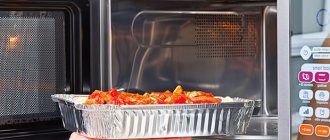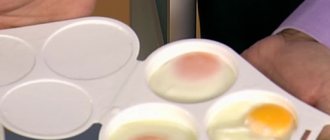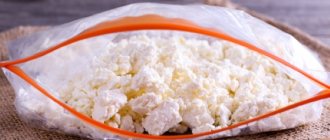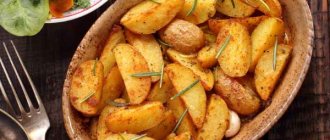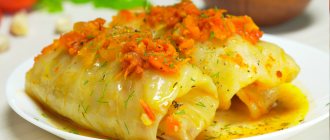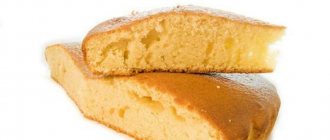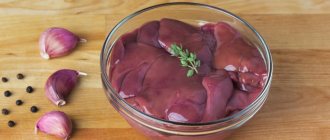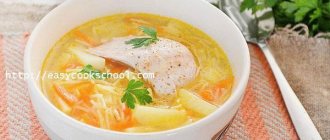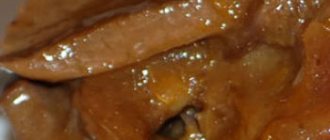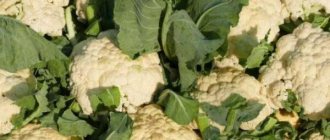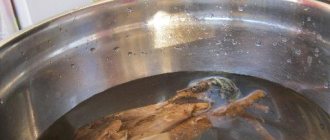What kind of cookware is suitable?
The main criterion for choosing a container that will be used for a furnace with ultrahigh frequencies is the thermal stability of the material. And if the cookware includes fire-resistant qualities, then it will be ideal for cooking.
A microwave can heat the contents inside to 100 degrees - this is the boiling point of the liquid. Heat-resistant dishes can be maintained up to 140 degrees. As for containers with fire-resistant properties, the heating temperature here can reach 300 degrees.
What dishes can be used in the microwave:
- Made from heat-resistant glass. It is not just a hardened material, it has fire-resistant qualities, making it ideal for use in UHF oven cooking. The walls of such dishes are made strong and thick, so during the cooking process the material is not subjected to excessive heating. Glassware for the microwave should not be chosen with thin walls. It will crack after the first or second use. Can glassware be placed in the microwave? Yes, but only products with thick walls.
- Made from porcelain. Almost every second piece of porcelain-based cookware can be used in the microwave. An exception may be dishes that are gilded.
- Made of ceramic coated with glaze. The dishes are used for quick heating and for preparing various foods. Ceramic microwave dishes can be used to fry eggs without oil, the result will be excellent. The only drawback will be the strong heating of the material, so do not forget to use oven mitts.
- Made from glass ceramics. This material is one of the most common. It combines the temperature resistance of glass with the beauty of ceramic cookware. All this combined gives excellent performance. This type of cookware can be used for heating and cooking food.
- From paper. Of course, such containers cannot be reused. Disposable dishes placed in the microwave are great for heating store-bought products.
- Cotton based napkins. Flour products are often wrapped in this material. Napkins help preserve the aroma of baked goods, and after heating the cake or pie will not become dry.
- Made of plastic. Contrary to frequent doubts, it is possible to heat food in plastic containers. This applies to containers. Today they are available in a wide variety - this is not the only positive side. But you can put plastic dishes in the microwave if you only need to heat up food. During the heating process, the plastic may begin to release substances that will negatively affect the products. As a result, ready-made food cannot be called healthy. The containers are ideal for microwave ovens and freezers, as they will not deform under the influence of temperature. An additional positive side of such dishes is that they are not afraid of sudden temperature changes.
- Made from heat-resistant film. This material does not melt or deteriorate under the influence of microwaves. Plastic film and transparent foil are especially popular today. They have small holes that allow steam to escape during the cooking process, and thus create a sauna effect inside the container. The materials can be used instead of a lid, and after cooking, the material will help maintain the temperature of the finished food for a long time.
- Made from silicone. This material is used for molds that are useful for baking. You can use them to make muffins, cakes and cupcakes.
Paper
Ceramic
Glass
Porcelain
Plastic
All these materials belong to the class of heat-resistant and can be heated in microwave ovens. Containers with semi-finished products deserve special attention. You can often see a mark on the packaging that the product is ready to be placed in the microwave without additional packaging.
If the food does not contain fat, water or sugar, wax paper packages can be used for heating. These wrappers are used solely for heating purposes. Paper containers are covered with a layer of wax on top, but when exposed to high temperatures, it will begin to melt and get on the food.
You will learn about additional containers made of other materials for microwaves from the table below.
| Packaging/ware | Microwave mode | Grill mode |
| Aluminum foil | It is forbidden | Can |
| Wax paper | Can | It is forbidden |
| Wooden dishes | For short heating periods | It is forbidden |
| Stone containers | Can | Can |
| Regular plastic bags | It is forbidden | It is forbidden |
| Plastic bags for cooking | You can, but you need to make holes before cooking. | It is forbidden |
| Food containers | Can be used for quick heating | It is forbidden |
Tips for choosing cookware
Some important parameters that give an idea of which plates can be used in the microwave:
- Choose containers with low walls . This allows you to heat your food faster. But if you decide to cook cereals or pasta, the container should have a reserve for accidental splashing of water. Since water forms bubbles when boiling, when heated with microwaves they remain at the bottom for some time. But after a certain time, the water can splash out.
- Choose a plate shape that widens towards the top . Hot liquid will not be able to “escape” from it, even if it boils strongly.
- microwave baked goods Remember that their walls should be higher than for the oven, since the dough rises more actively in the microwave.
- for heating one bun or sandwich. There are even special porous bags.
- Do not use polyethylene in a microwave oven. Its thin film will simply melt as the temperature rises. A thick layer of polyethylene will spread an unpleasant odor that will spoil the food.
- To get a golden crust on baked products, purchase a special glass-ceramic pan. The bottom of such a container has a layer of a special composition, which heats up greatly under the influence of microwaves. But you will have to first keep the container in the microwave without food so that the bottom heats up, and only then carefully place pieces of vegetables, meat or fish on the bottom.
About other kitchen appliances:
All about electric choppers for the kitchen
How to choose a coffee machine for your home
How to choose electric kettles
Not all cutlery can be placed in the microwave due to restrictions on certain materials. For those who are interested in what dishes can be put in the microwave, there are mandatory precautions :
- Choose containers that are stable inside the appliance and will not touch the walls of the microwave oven.
- If sparks, fumes or smoke appear, immediately turn off the timer and remove the container. Do not use such utensils to heat food in the microwave again.
- Do not allow the temperature of the dishes to change.
- It is prohibited to cook or heat food in hermetically sealed containers.
Reference. Microwave approved products display a square with waves or a microwave icon.
Special marking
In addition to tableware, you can separately purchase special ovens designed for ultra-high frequencies. When selecting cooking equipment, do not forget to pay attention to the presence of special marks (markings). Responsible manufacturers who care about their reputation and product quality make marks, inscriptions or pictures that indicate the suitability of the dishes for use in a microwave oven. This does not apply to plastic; it is enough to have a mark on it that it is heat-resistant.
Utensils for microwave ovens are marked with the following markings:
- Microwave safe. This mark on the cookware means it is suitable for heating and cooking. If such a mark is crossed out, this indicates that the container cannot be used in microwave ovens.
- Not recommended microwave. Microwave cookware is marked to indicate that it is not recommended for use in the microwave. And vice versa, if it says recommended microwave, then the dishes are suitable for such ovens.
- PP (polypropylene or polystyrene). Be careful with this designation. The dishes cannot be used in a microwave oven. The containers are not suitable for hot foods or drinks. They can be used for storing cold food and sandwiches.
What to do if a plate breaks in the microwave
Let’s imagine that a microwave oven plate has broken or a chip has appeared on it, what should we do? You need to buy a new one or make a pallet yourself. As for the first option, you need to measure the distance from the back panel to the microwave oven door. You can find a plate that fits the size at a hardware store.
Shape selection
Every housewife wants the prepared dish to be not only aromatic, but also pleasant to the taste. The result depends not only on the material, but also on how correctly the shape of the dish is chosen. In order to achieve uniform and proper heating of food, it is recommended to use cylindrical or oval-shaped plates. It is better to avoid square or rectangular containers; cooking will take a long time, and the food itself will dry out. To ensure that food heats up quickly and evenly, it is better to choose plates with low edges but a wide bottom.
Microwave ovens have long lost their status as equipment used by bachelors; these electric assistants can surprise everyone. And if you take into account the large selection of models, you can count on a huge range of tasks to be performed. The combination of a microwave and the right cookware will ensure that you forget about a regular gas stove. Please note that individual products are prepared on specific dishes, for example:
- To prepare pasta or cereals, it is better to choose containers with widened sides on top. The plates should be high enough so that the liquid does not spill out during cooking.
- Muffins, cakes, bread and pies require an oblong shape of the container and always high sides. At the time of cooking, the dough begins to rise and it is the sides that will prevent it from spilling out.
- A medium-height plate is suitable for aromatic vegetables and fruits. It should be borne in mind that these products shrink during cooking and release juice, which will evaporate.
It is not recommended to cook or heat in dishes with uneven or slanted edges, as the heating result will be uneven. A plate placed in the microwave with the wrong shape often heats up, but the food does not. Many attribute this to the quality of the equipment, but as it turns out, the problem is only in the correct selection of the form.
Rules for using microwave oven plates
We looked at how to choose a tray-plate for a microwave oven, now regarding the features of using the dishes themselves, namely plates for a microwave oven for heating food. There are a number of subtleties that you should know for proper operation of household appliances:
- It is best to give preference to glassware. But the container must be free of cracks and chips. Tempered glass cookware is also suitable for ovens.
- Plastic containers are also suitable for use, but remember that they must be specially marked. Otherwise, there is a possibility that the container will simply melt and the material will release hazardous substances to human health.
- You should buy containers exclusively in household appliances or kitchen utensils stores. Poor quality kitchen utensils can ruin your appliances.
- Use the “Grill” mode when cooking exclusively in plastic containers.
- It is not recommended to cook dishes with a high content of sugar and fat in plastic containers, because... Such products instantly heat up and deform the plastic container.
- Remember that before turning on the heat, remove the cling film.
- To cook dishes with a crust in the microwave, it is best to buy special glass-ceramic dishes with a treated bottom. But when using such containers, you should remember the rule: before loading the food for cooking, be sure to warm the dishes a little in the microwave oven.
It is important to remember that a microwave oven is a complex household appliance. Not only the quality of the prepared dish, but also the speed of heating depends on the heating container purchased. It is important to pay attention to both the shape and diameter of the oven container:
- Heating in deep saucers increases the heating and cooking time.
- It is better to use round containers. Cooking in containers with sharp or slanted edges can cause uneven cooking and heating of food.
- If you bake in a microwave oven, then you need to use a deeper bowl, since the dough rises much more in the microwave than in the oven.
When you buy containers for a microwave oven, pay attention to its integrity and quality, since the presence of defects and even minor chips can ruin both the equipment and become a catalyst for a fire in the house.
Is a cover necessary?
Do not heat or cook food in a microwave oven in a closed container. Due to the temperature, the contents inside may explode. Before using the microwave, be sure to remove the lid from your dish or jar. For the same reason, you cannot heat nuts or eggs in the oven; an explosion of the food inside cannot be avoided. If you need to cook sausages or tomatoes, you must first pierce them with a fork. This will allow the steam inside the food to escape.
Many kitchen appliances sold for microwave use do not include a lid. The exception is plastic containers. Microwave pottery can also be covered with a lid. If a microwave oven is used in the kitchen as the main assistant, you will have to get a lid to get a fragrant and tender dish.
You will definitely need a lid if you cook soups in a microwave oven, so that at the end of cooking you won’t find that all the liquid has evaporated.
Of course, it is not advisable to use sealed lids; it is better to choose those that are equipped with holes for steam escape. You can use transparent foil that already has holes in it.
Cooking in the microwave: how to choose dishes?
Many ovens have grill and convection modes. Cooking in these modes can only be done in containers made of fireproof (heat-resistant) glass, ceramics, or silicone.
First courses and vegetables should be placed in a glass saucepan. Instead of a lid, it is better to use film with holes for steam to escape.
Silicone molds were invented for baking. They are not afraid of temperatures and do not release toxins when heated. Baking from them is easily laid out on a dish.
The cutlets and omelet will be evenly fried in a container two centimeters above the product level. It is best to cook dishes made from pieces of meat on a tempered glass baking sheet. It will adequately withstand the convection-grill mode, which is optimal for baking.
When selecting dishes for the microwave, rely on the dimensions of the equipment. For a 15 liter oven, the cookware should be up to 1500 ml (1.5 l).
The height of the sides of the container should be a centimeter and a half greater than the height of the contents. For liquid dishes, the plate may be 2 cm higher. A container that is too deep will increase the heating time, which will affect the meter readings.
What not to put in the microwave
If you want the food you cook in the microwave to be healthy, and your equipment to remain operational for many years, pay attention to what kind of dishes you place inside the oven. There is a list of dishes that absolutely cannot be used in microwave ovens:
- Containers with gilded designs;
- Ceramic plates without glaze;
- Thick aluminum pans designed for oven use;
- Pots, mugs and bowls made of metal;
- Thin glass plates;
- Crystal devices;
- Silumin containers.
If dishes made of silumin, as well as dishes made from glass or ceramics without glaze, are rarely found at home, then special attention should be paid to iron, crystal plates, and with gilded rims. Why can't you heat food in metal dishes? During cooking, an electrical charge may form inside the appliance, which may damage the appliance. This is the main reason why you should not put metal utensils in the microwave. This aspect also affects those dishes that have rims made of paint based on metal particles. An exception may be semi-finished products, which are packaged in containers made of very thin aluminum. Even when using dishes, before turning on the device, you need to make sure that the plate does not rub against the walls of the oven, and that the height of the product does not occupy more than two centimeters. The duration of heating of products in aluminum bowls will be longer.
If cooking will be carried out using grill or convection mode, you can also use small aluminum cookware.
Containers can only be placed at the bottom. This is especially true for models that include the ability to place products on several tiers.
You can use everyday utensils for the microwave, the most important thing is that there are no gold-plated rims or patterns on their edges. This also applies to silver finishes. This paint contains metal components that conduct electricity. Most housewives have more than once noticed the appearance of characteristic crackling sounds and electrical flashes inside the equipment. This is due to the golden rims and waves that are reflected.
Few people know that crystal should not be used. There are several reasons for this:
- If the crystal is real, it contains lead;
- Expensive crystal, in addition to lead, may include silver;
- The walls of faceted crystal containers have uneven thickness, which will lead to uneven heating.
Because of the metal, the cookware will start to heat up very quickly. As a result, the crystal salad bowl or bowl will crack. No need to experiment, take care of your crystal devices.
To determine the material used to make the dishes, you can conduct an experiment. Place a glass of water on a plate and microwave for 1 minute, setting the power to maximum. If after this time the container is cold, then the material is ideal for use in an ultrahigh frequency oven. Any product placed inside the appliance will heat up quickly, and the dish itself will not cause harm to the stove. If the container heats up after treatment with waves, this means that it absorbed all the radiation at the time of treatment. Food in such dishes will take a long time to heat up and will significantly shorten the life of the household appliance; it is better not to use it. Another important point. You cannot put the microwave into operating mode if it is empty inside. Microwaves, which should be aimed at heating, will begin to reflect from the walls of the oven, as a result, this will lead to failure of the device.
What does the icon on a microwave plate mean, how to decipher it
Everyone has probably noticed a sign on the microwave tray; most often this indicates the direction of placement on the cross. In addition, there are also markings on the dishes for microwave ovens.
For example, if plastic dishes are used, then they must be heat-resistant, and such containers are indicated by a picture of a microwave and arrows forming a triangle, inside of which is the number 5. Such designations will help you understand which plates cannot be put in the microwave and which ones can.
But, if you come across a crossed out image of a microwave oven on the surface or a triangle formed from arrows with the number 6 inside, this cookware is not intended to be exposed to high-frequency waves.
To summarize, it must be said that a microwave oven, like any other household appliance, has its own operating characteristics. In this case, owners should pay special attention to the choice of utensils for preparing and heating dishes. Not only the speed of preparation, but also the safety of the user himself depends on this. As for the pallet itself, if it is cracked or broken, it is still better to buy this element in a specialized store rather than making a plate with your own hands. And be sure to pay attention to the labeling of the container you choose for the oven.
What kind of plastic is suitable for the microwave?
Material requirements
The main condition is that the dishes for heating food must be heat-resistant in order to withstand the maximum heating temperature. It is in the range of 130–140°.
Suitable items must have a schematic image of a microwave or the inscription “microwave oven safe” on them, indicating suitability for use in microwaves.
The trade offers items made by different manufacturers. Some of them charge attractive prices. However, the technology that ensures the quality of the product is not always followed. Therefore, when purchasing, it is better to give preference to a proven, well-known brand, even if its products are not the lowest cost.
REFERENCE! The seller must have a quality certificate guaranteeing safety and high quality. Conscientious traders present it to customers upon first request.
Cheap product options are usually made in China from low-quality materials.
To check suitability, you can press your fingernail on the surface, there should be no white scar left.
What types of plastic can be used in the microwave?
There is a large selection of containers made from various types of food polymer materials. Each of them has its own purpose and suitability. To make the right choice, you should be careful: carefully study the product and find the necessary information from the manufacturer (letter code).
If you can find the symbol PP , then it is made of polypropylene. It has high elasticity and guarantees safety when used in microwave ovens . Polyamide plastic is also acceptable.
IMPORTANT! If the marking is PS-polystyrene, then this cookware is not intended for microwave ovens. Polyvinyl chloride (PVC) is also unsuitable, as is polyethylene, which emits an unpleasant odor when heated and can melt.
Please keep in mind that PS containers are only safe for storing cold foods or water.
How to Safely Use Plastic Microwave Utensils
There are simple rules , the strict implementation of which will allow you to use such utensils without harm to the body.
- Preheat only at low power , it will take more time, but it's worth it. At high powers, negative chemical (estrogen-like) substances are released and absorbed into the contents.
- Use dishes strictly for their intended purpose (various types of plastic become toxic only under specific conditions).
- Before heating, it is recommended to remove the lid or open the valve , if equipped. This is necessary for the free release of emerging steam.
- When placing the container, it is worth considering that the distance to the walls should be at least 2-3 centimeters .
- If there is a grill function, it is advisable not to use plastic containers. If possible, it is better to transfer from the container to a neutral container made of heat-resistant and fire-resistant glass.
